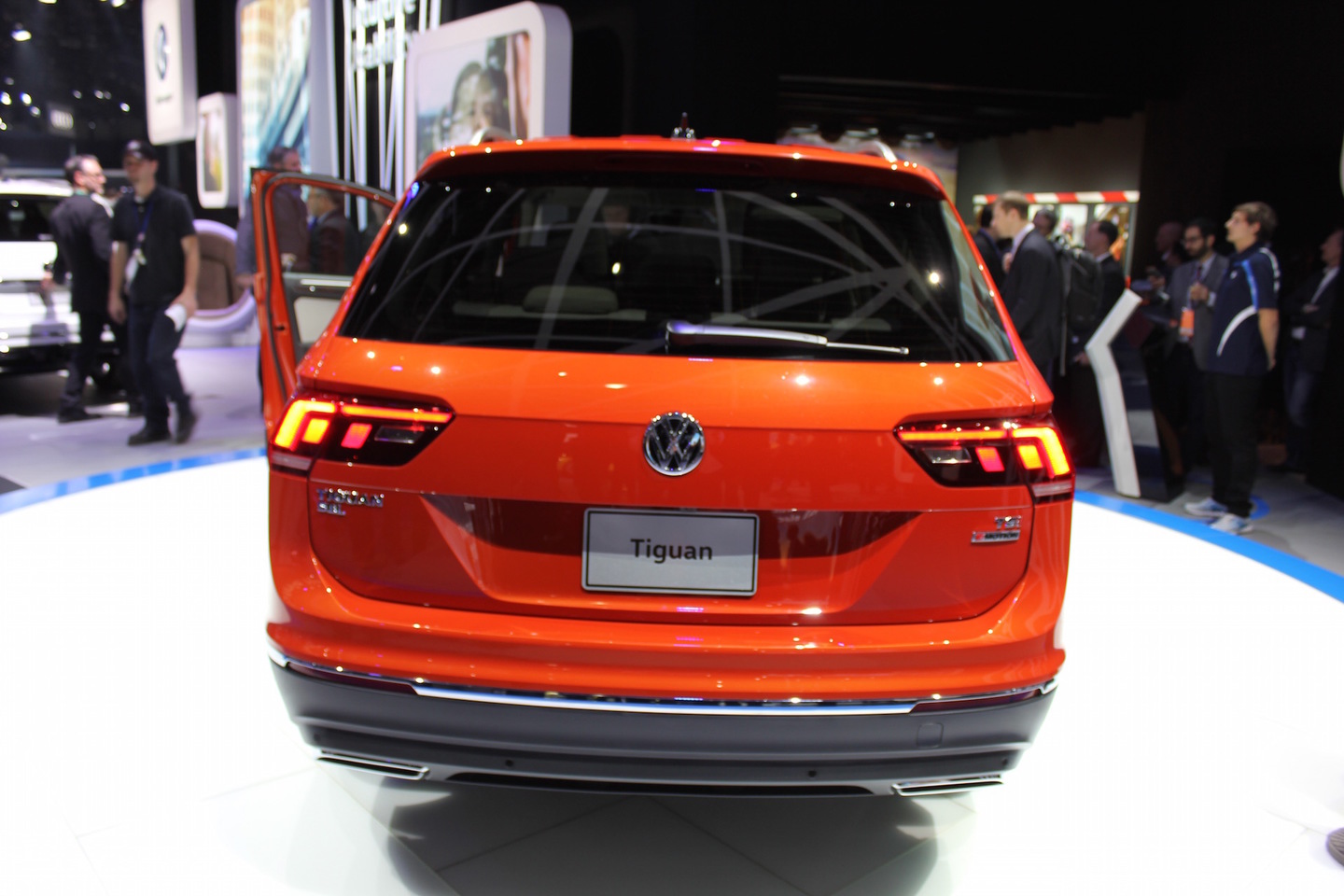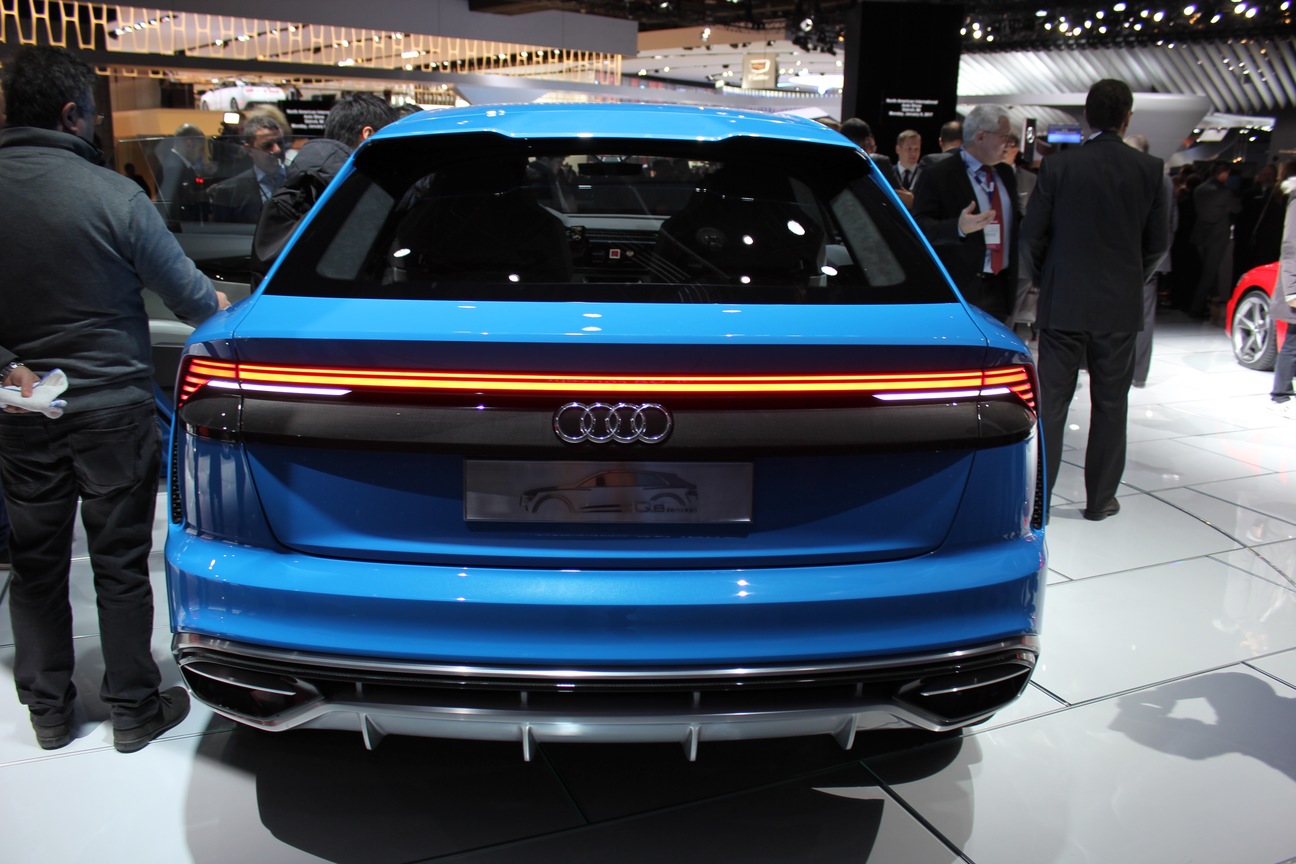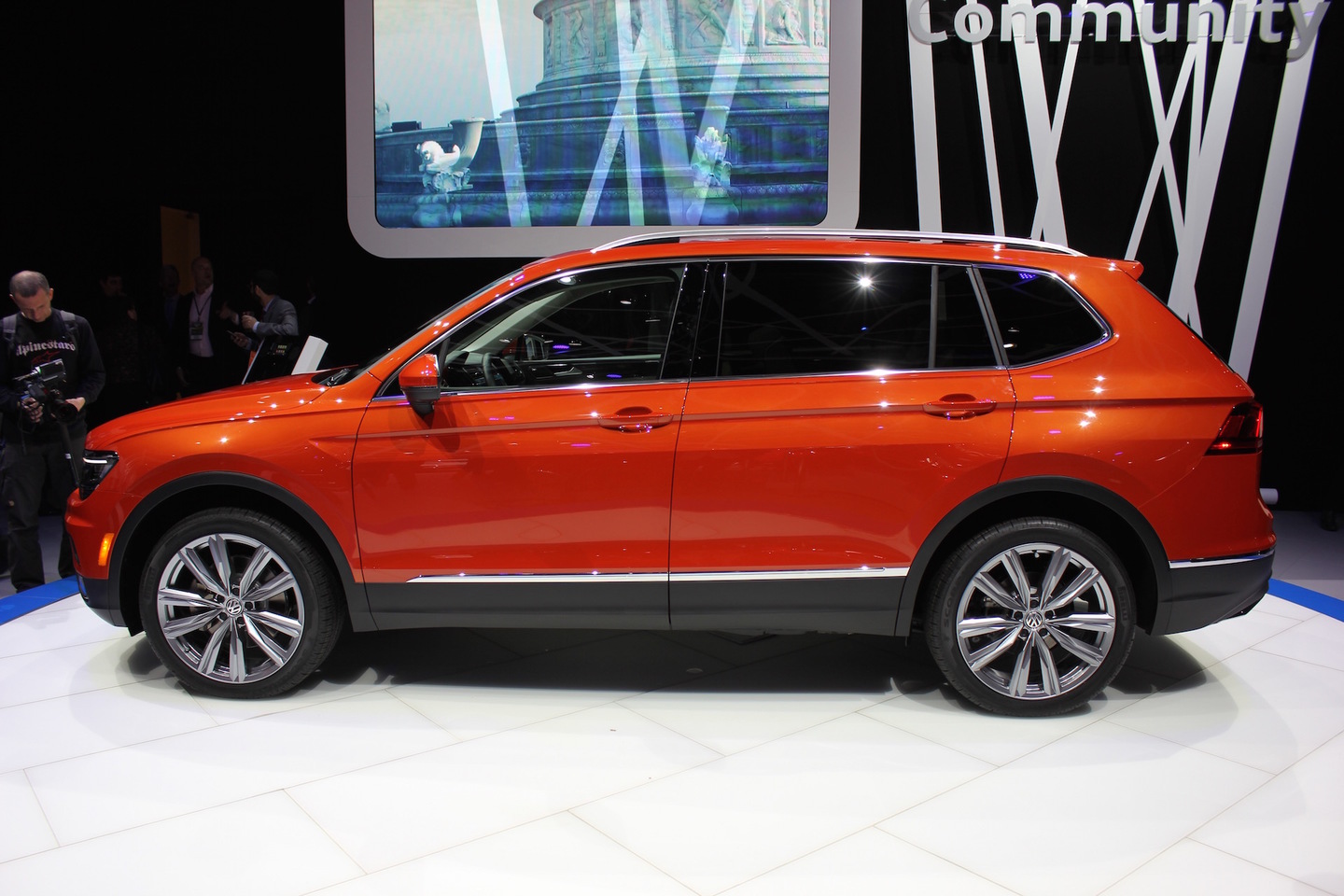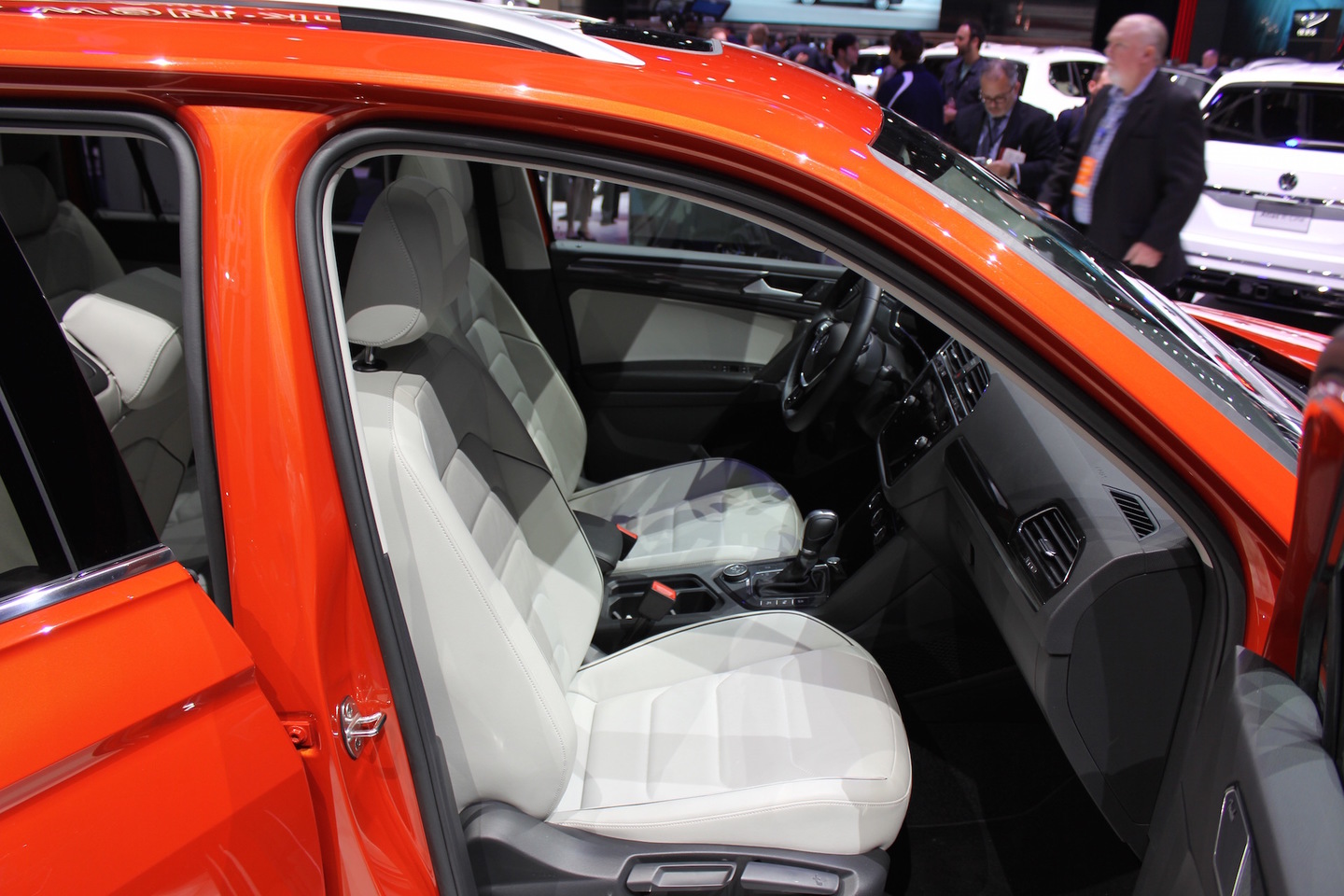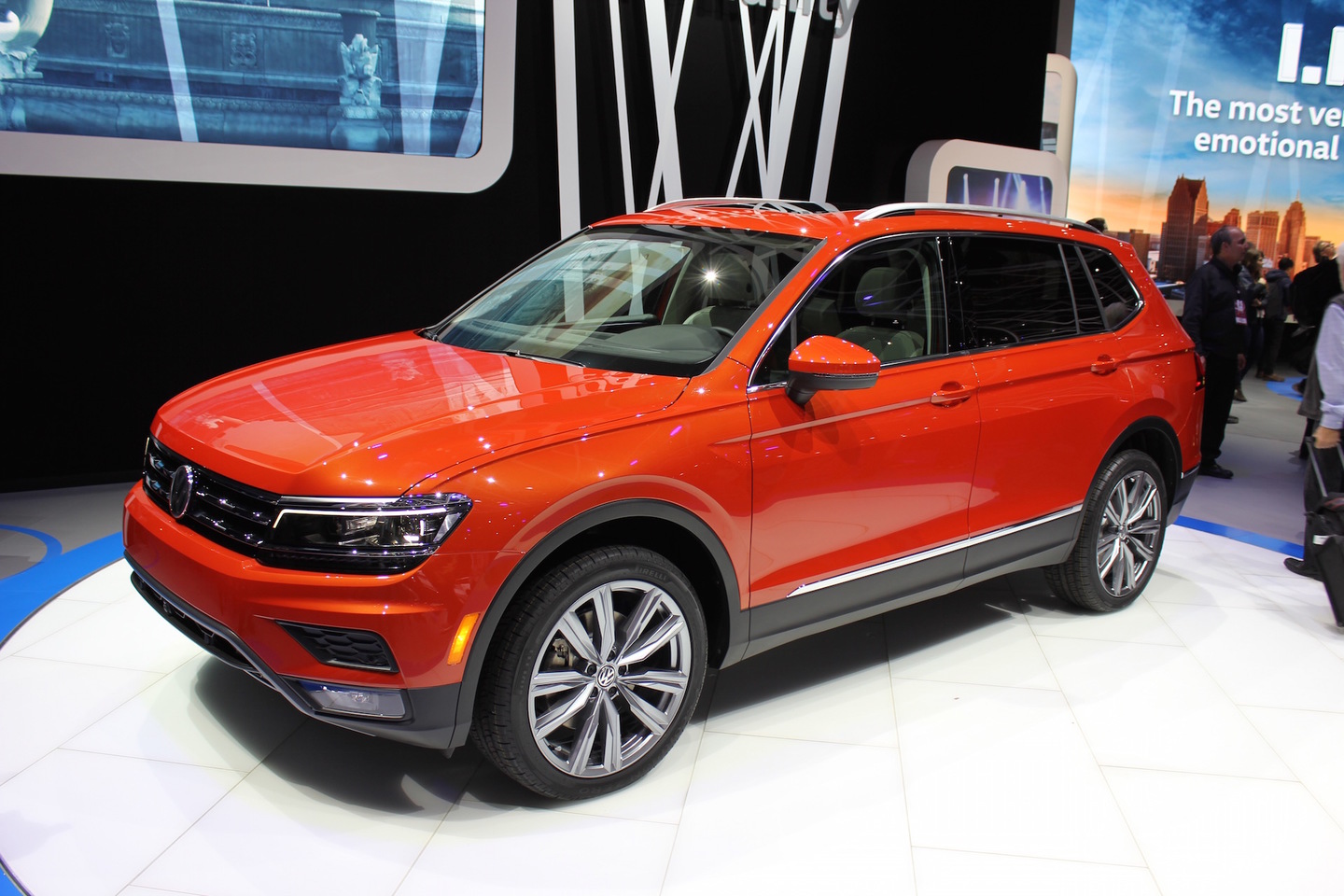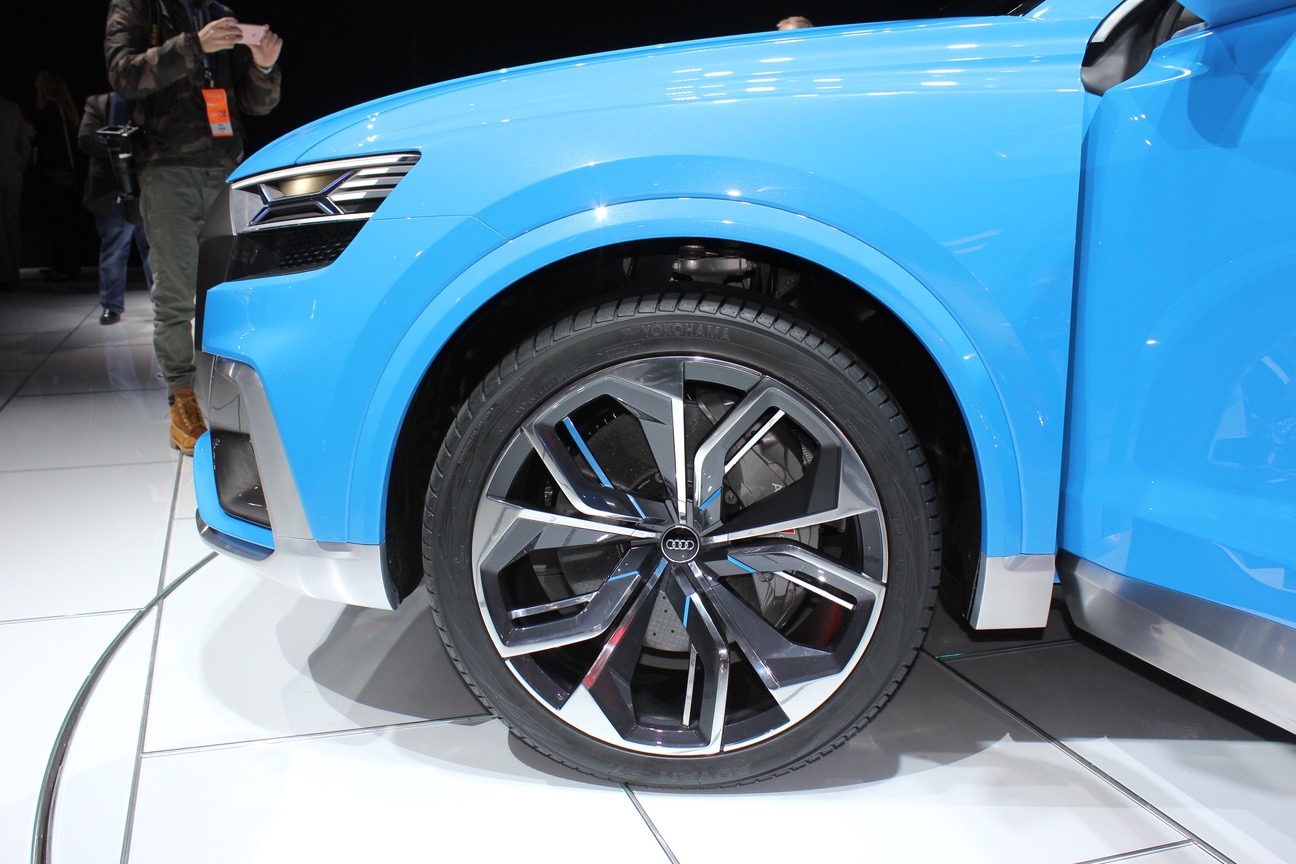Audi’s Q8 concept made its world debut at the Detroit Auto Show. The design study accurately previews a production model that will arrive in showrooms as early as next year.
The Q8 is a four-door crossover-coupe in the vein of the Mercedes-Benz GLE Coupe and the BMW X6, but it’s a little bigger than its two rivals so it inaugurates a new segment, according to the company. It elevates Audi’s design language to new heights by adopting styling cues such as a grille with vertical slats that’s wider than the one found on the company’s current models, and ultra-thin tail lamps connected by a light bar.
Audi points out the muscular-looking front end and the pronounced, vented rear haunches pay homage to the original Quattro coupe that dominated the rally scene during the 1980s. The soft-roader undeniably puts a bigger emphasis on form than on function, but it nonetheless offers 22 cubic feet of trunk space with four passengers aboard.
Key information about the Q8 and its surroundings is displayed either on the digital, configurable instrument cluster or on the heads-up display. Touch-sensitive surfaces replace virtually all of the switches, knobs, and buttons typically found on the dashboard, a solution which gives the cabin a clean, uncluttered look.
Discreet e-tron emblems inside and out reveal power comes from a gasoline-electric plug-in hybrid drivetrain. A 3.0-liter TFSI V6 engine works with a compact electric motor integrated into an eight-speed automatic transmission to send 442 horsepower and 516 pound-feet of torque to all four wheels. The Q8 hits 62 mph from a stop in 5.4 seconds, and it goes on to a top speed that’s electronically limited to 155 mph. Alternatively, the 17.9-kWh lithium-ion battery pack stores enough electricity to power the Q8 on its own for 37 miles.
Audi openly admits the Q8 e-tron is a thinly veiled, close-to-production concept, and a toned-down version of it will join the company’s lineup next year as a 2019 model. Its size — and the Q8 nameplate — both hint it will be positioned at the top of the company’s lineup when it goes on sale.
Editors' Recommendations
- Audi Q6 e-tron ushers in the automaker’s next EV phase
- 2023 Audi Q4 E-Tron first drive: the predictable and traditional EV SUV we need
- 2020 Audi E-Tron Sportback is all about style, but still has substance
- 2020 Audi E-Tron Sportback, RS Q8 confirmed for 2019 LA Auto Show
- 2020 Audi A8 gains plug-in hybrid powertrain, sporty S8 model

